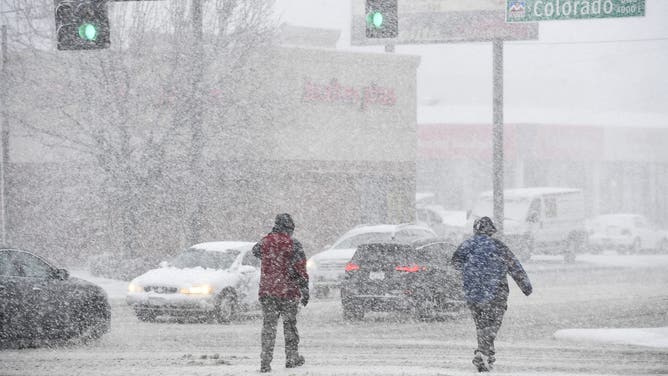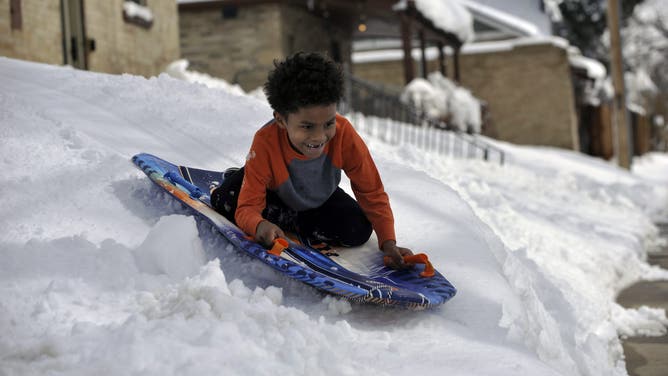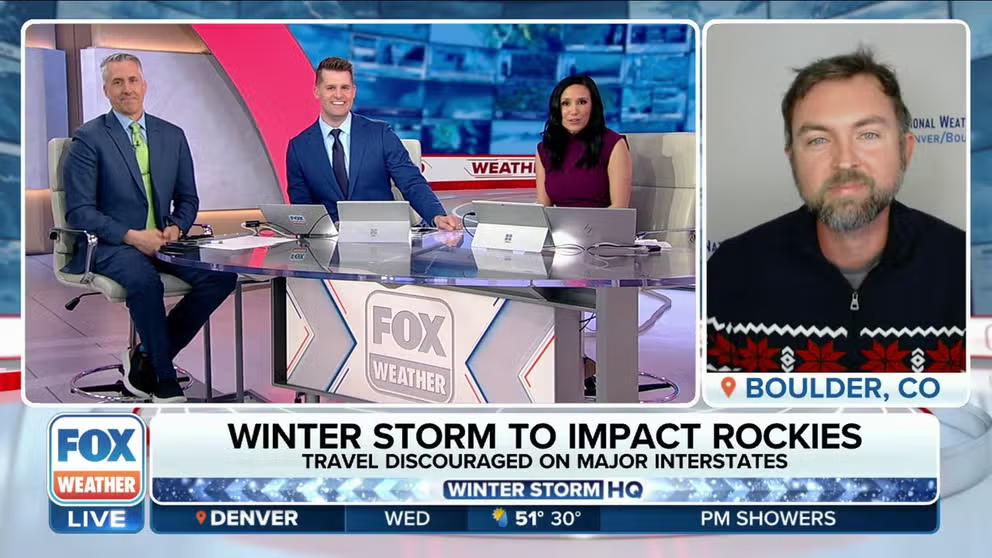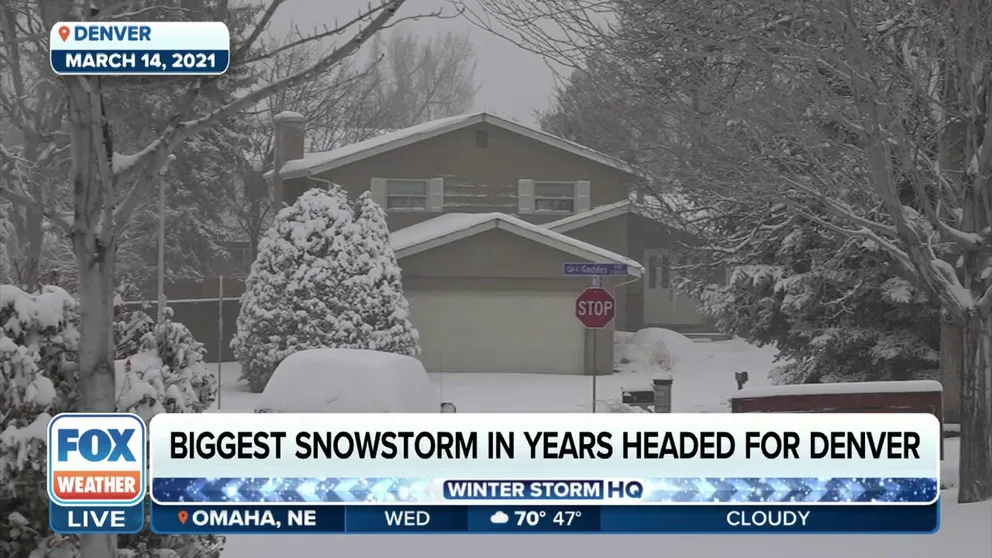Denver blasted again by a March 13-14 snowstorm: Mystery, coincidence or science?
Late Thursday into Friday, Denver faces the heaviest snowfall that they have seen in three years to the day, which itself came on the second anniversary of a major winter storm.
Why does Denver get clobbered by snow continually on March 13-14?
FOX Weather asked Greg Heavener, an NWS Boulder Meteorologist, why the Denver area seems to get hit with snowstorms on March 13-14 over and over again. He also shares what makes forecasting snow in the area so tricky.
DENVER – We have all heard "history repeats itself", but FOX Weather argues that the expression should be "weather repeats itself." Late Thursday into Friday, Denver faces the heaviest snowfall that they have seen in three years to the day, which itself came on the second anniversary of a major winter storm.
And before you argue that it is just a coincidence, a look back at Denver's weather records shows in addition to 2021 and 2019, the Mile High City was blanketed by snowstorms of at least 5 inches on March 13 or 14 in 1990, 1947, 1926, 1923 and 1907.

File: DENVER, CO - MARCH 13: Two pedestrians cross Colorado Blvd at Evans in a blinding snowstorm March 13, 2019.
(Andy Cross/MediaNews Group/The Denver Post / FOX Weather)
There is no coincidence or mystery
FOX Weather called on an expert, Greg Heavener, Warning Coordination Meteorologist at the National Weather Service in Boulder to see if there was a reason those dates have featured frequent snow.
"I think there's a whole bunch of butterflies that are flapping their wings over and in West Africa right now that is currently occurring," Heavener joked.
But he said this is no mere coincidence; there is science backing March 13–14 storms. First, March is Denver's snowiest month.
WHICH IS THE SNOWIEST MONTH OF THE YEAR?

Denver's top 5 worst snow storms.
(FOX Weather)
"Usually, mid-March is our kind of season for these big blockbuster winter storms," Heavener said. "And this year it's been three years since the last one. 2021 was the last big, big one. So we're kind of due."
The second reason is a bit more complicated.
"It's the pattern," he continued. "It's the Madden-Julian Oscillation pattern, the MJO and the El Niño kind of waning. So it's a combination of many climatic indices developing over us."
THESE ARE THE 7 SNOWIEST CITIES IN THE US

File: Snowdrifts created a wall around a farm in eastern Colorado after a March 13, 1977 blizzard.
(Duane Howell/The Denver Post / Getty Images)
And the world didn't just experience the El Niño pattern this winter, we had the rare Super El Niño – think El Niño on steroids.
HOW MUCH SNOW DOES YOUR CITY NORMALLY SEE IN A YEAR?

File: DENVER, CO - MARCH 14 : People are digging cars at Baker neighborhood in Denver, Colorado on Sunday, March 14, 2021.
(Hyoung Chang/MediaNews Group/The Denver Post / Getty Images)
"(El Niño) means the probability for higher than average precipitation is expected to increase from November through April," writes NWS Boulder. "Statistically, northeast Colorado receives higher than average precipitation for the winter season during El Niño conditions as deep upslope conditions develop from organized storm systems which track into eastern Colorado and central US plains from the Four Corner's region of Arizona, New Mexico, Utah and Colorado."
The déjà vu forecast for Denver this week
With the current storm forecast, Denver could see heavy snow for 48 hours straight. At times, the snow could fall at 1-2 inches an hour, while the foothills and mountains could see 2–3 inches of snow per hour. Gusty winds will whip up blizzard-like conditions.
THE SOUND OF SILENCE: WHY IT'S QUIETER AFTER A SNOWSTORM
"Weather repeats itself," Denver to bet blasted three years to the day after last major snowstorm
FOX Weather Meteorologist Jason Frazer argues that the expression should be "weather repeats itself," not history. Denver is bracing for the biggest storm they've seen in three years to the day after the last major storm. Here is the forecast and a look back.
By the time the storm ends, Denver could see up to a foot of snow while the mountains could be in for up to 4 feet of snow.
On March 13-14 in 2021, Denver was crippled by 3-inch-per-hour snowfall rates in stiff winds. The blizzard closed interstates and the airport canceled more than 2,000 flights, according to FOX 31 Denver. The 27 inches of snow made the 2021 storm the fourth worst storm since recordkeeping began in 1882.
SNOW IN AMERICA'S ‘HEATLAND’: THE ZANY TIMES IT SNOWED IN SOME OF THE COUNTRY'S WARMEST PLACES

File: Not everyone was unhappy about the 2021 heavy snow in Denver.
( Patrick Traylor/MediaNews Group/The Denver Post / Getty Images)
On those same two dates in 2019, a bomb cyclone exploded over the city. The NWS reported a storm with the lowest pressure over recorded over Colorado. Over half-a-million people lost power, according to FOX 31. Denver clocked a wind gust of 80 mph, the third-highest gust on record for the city, as just over 7 inches of snow fell.

